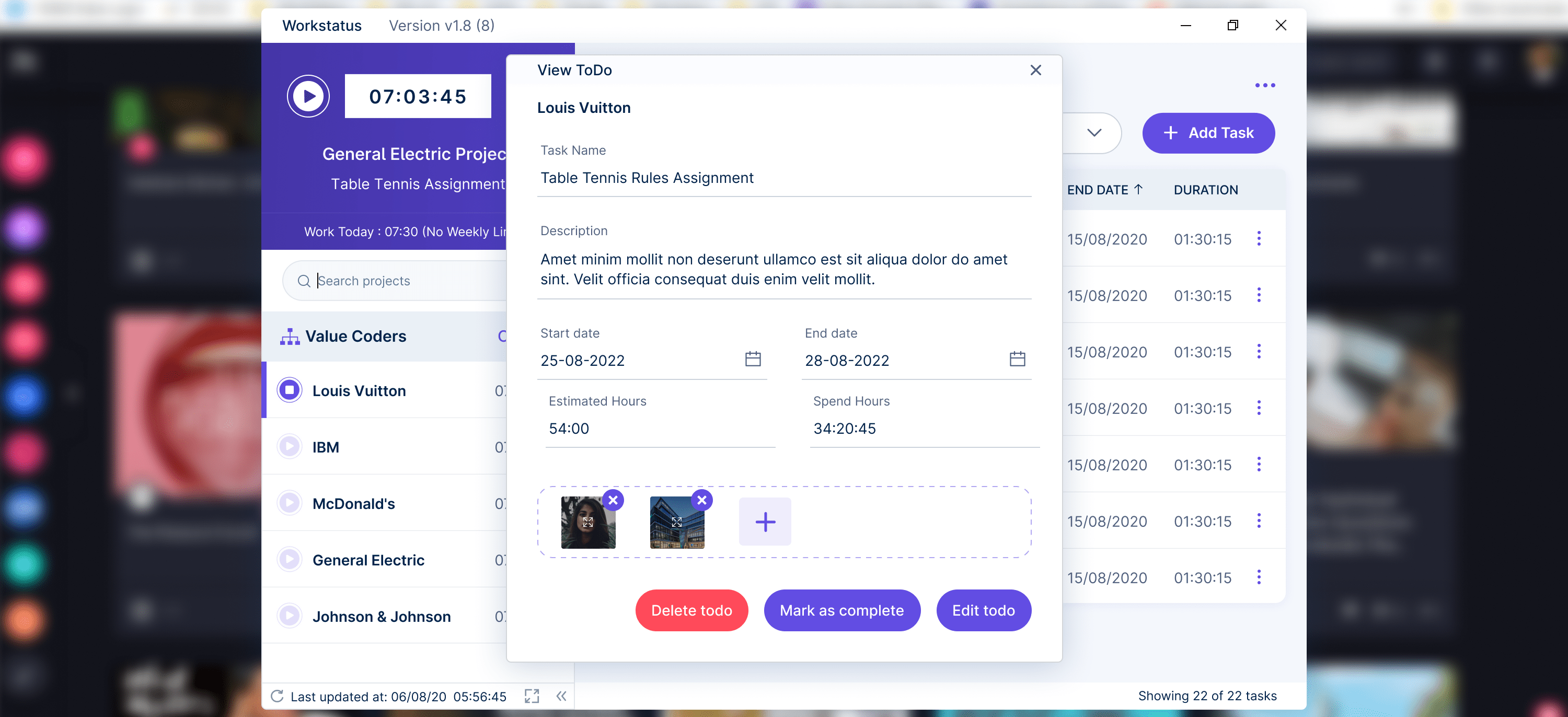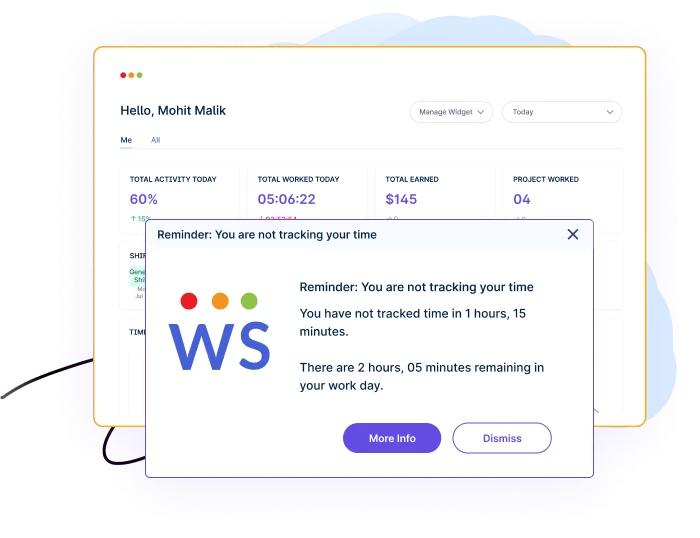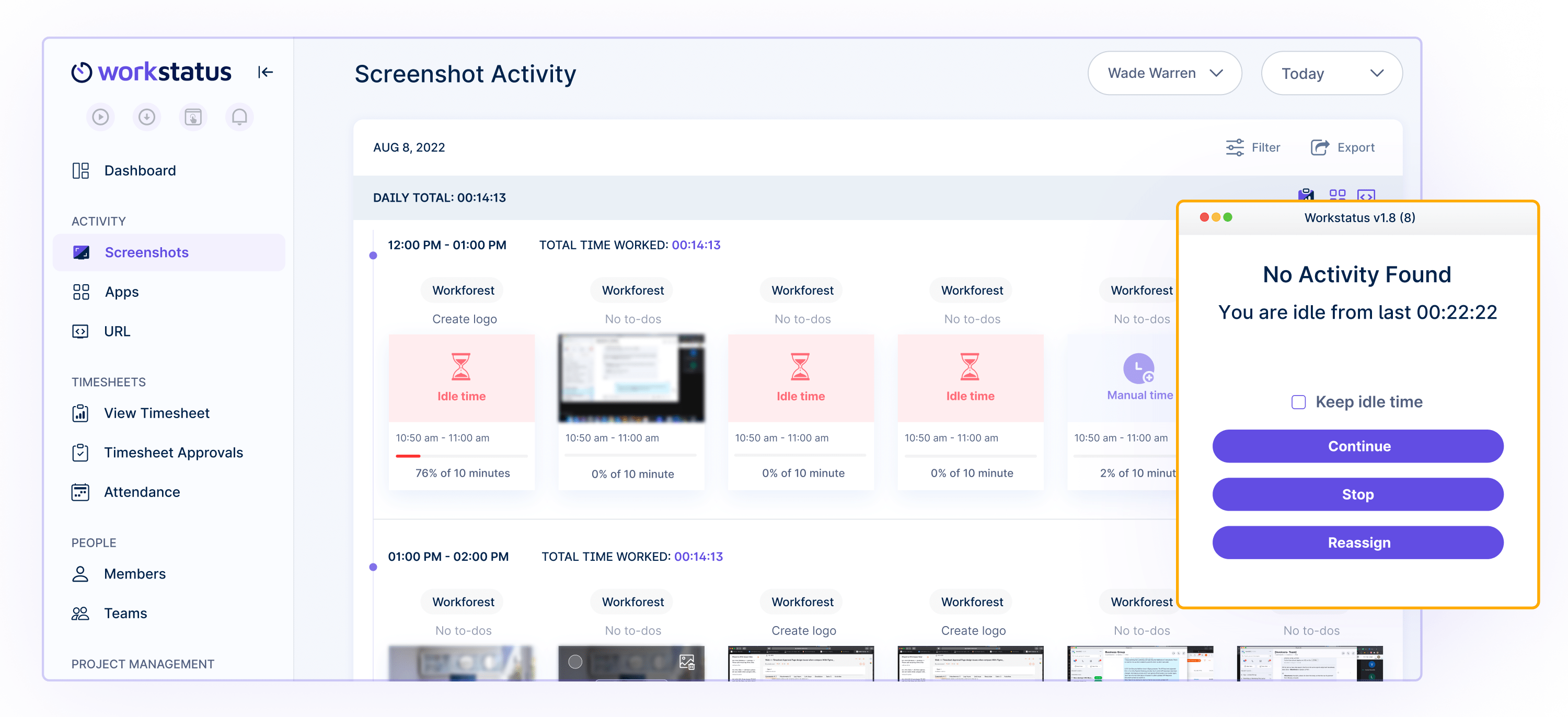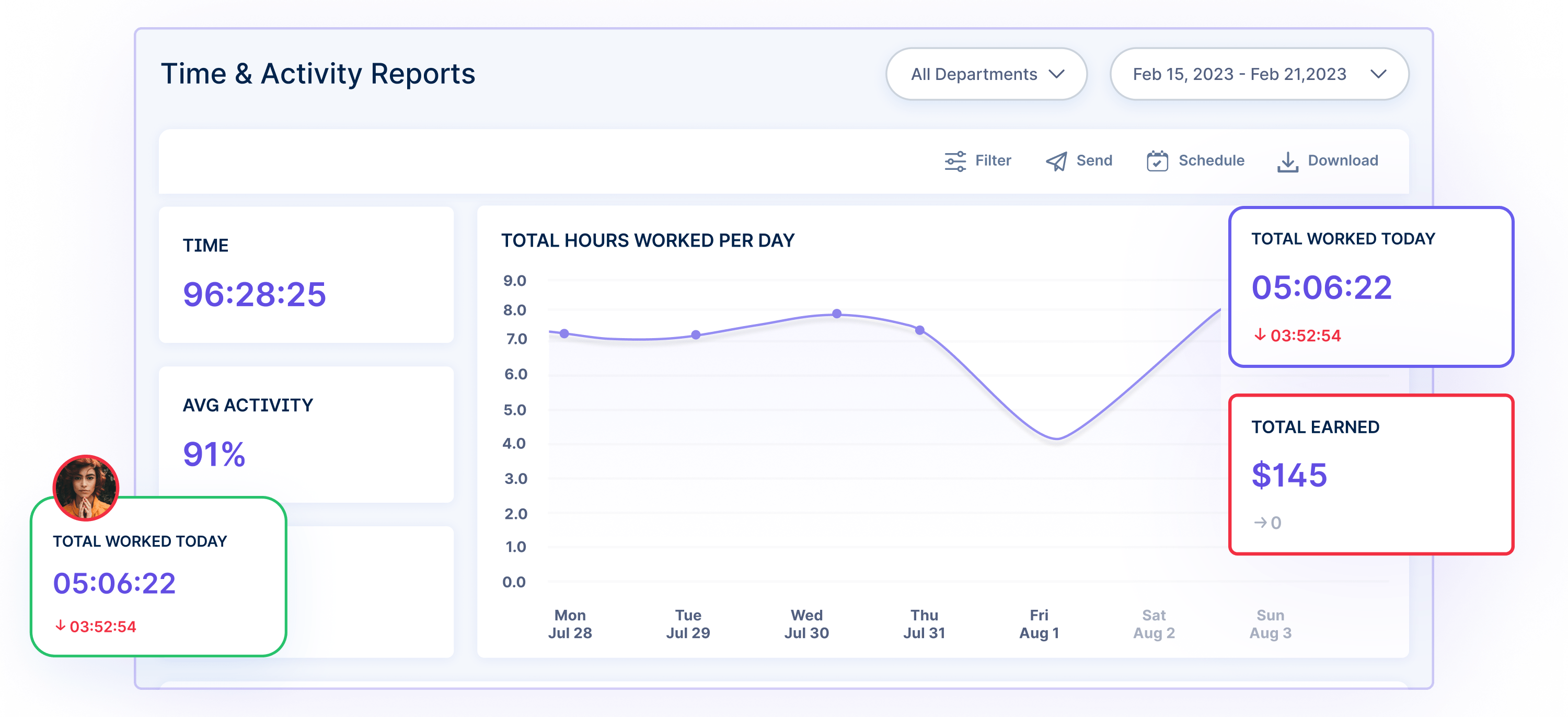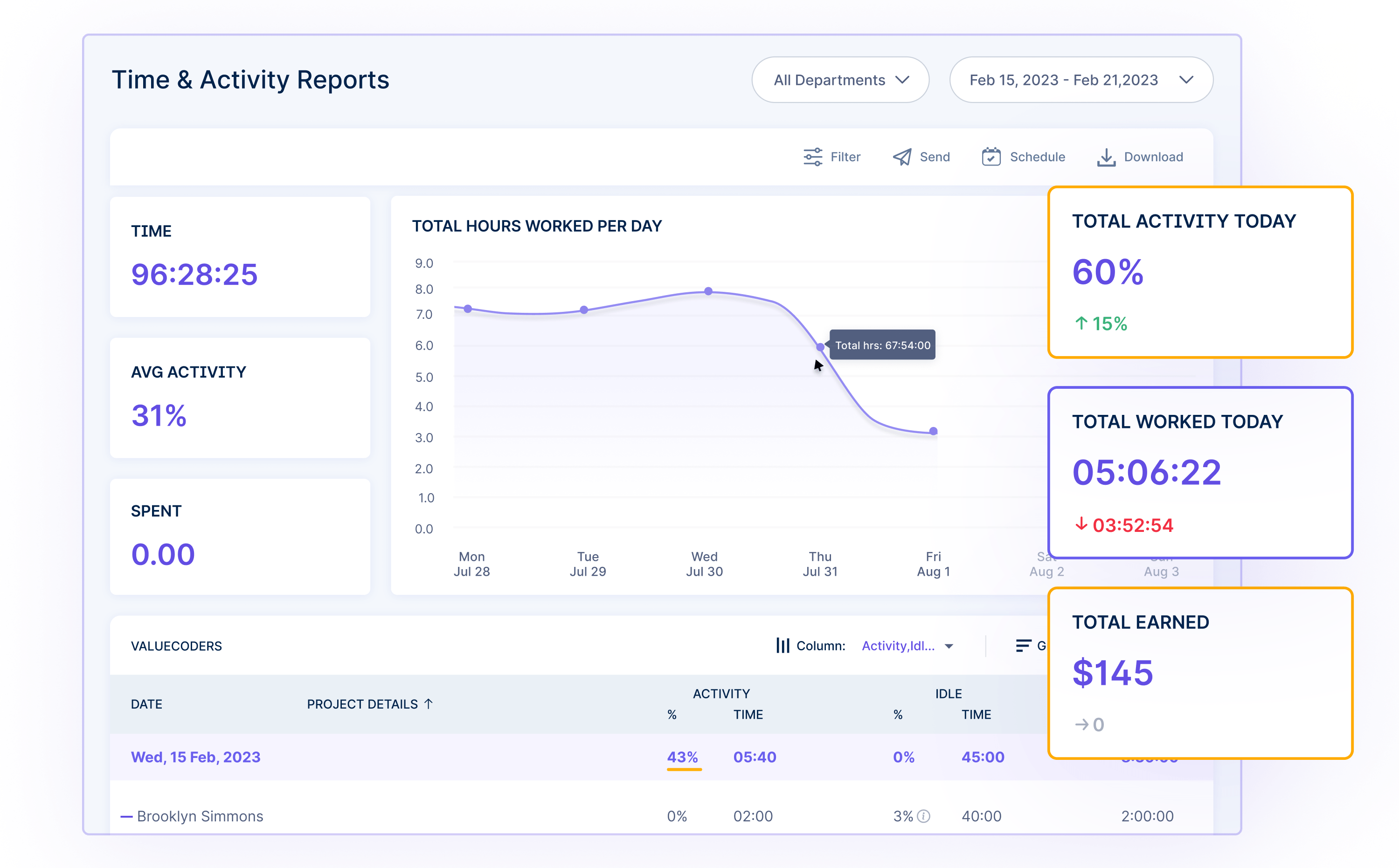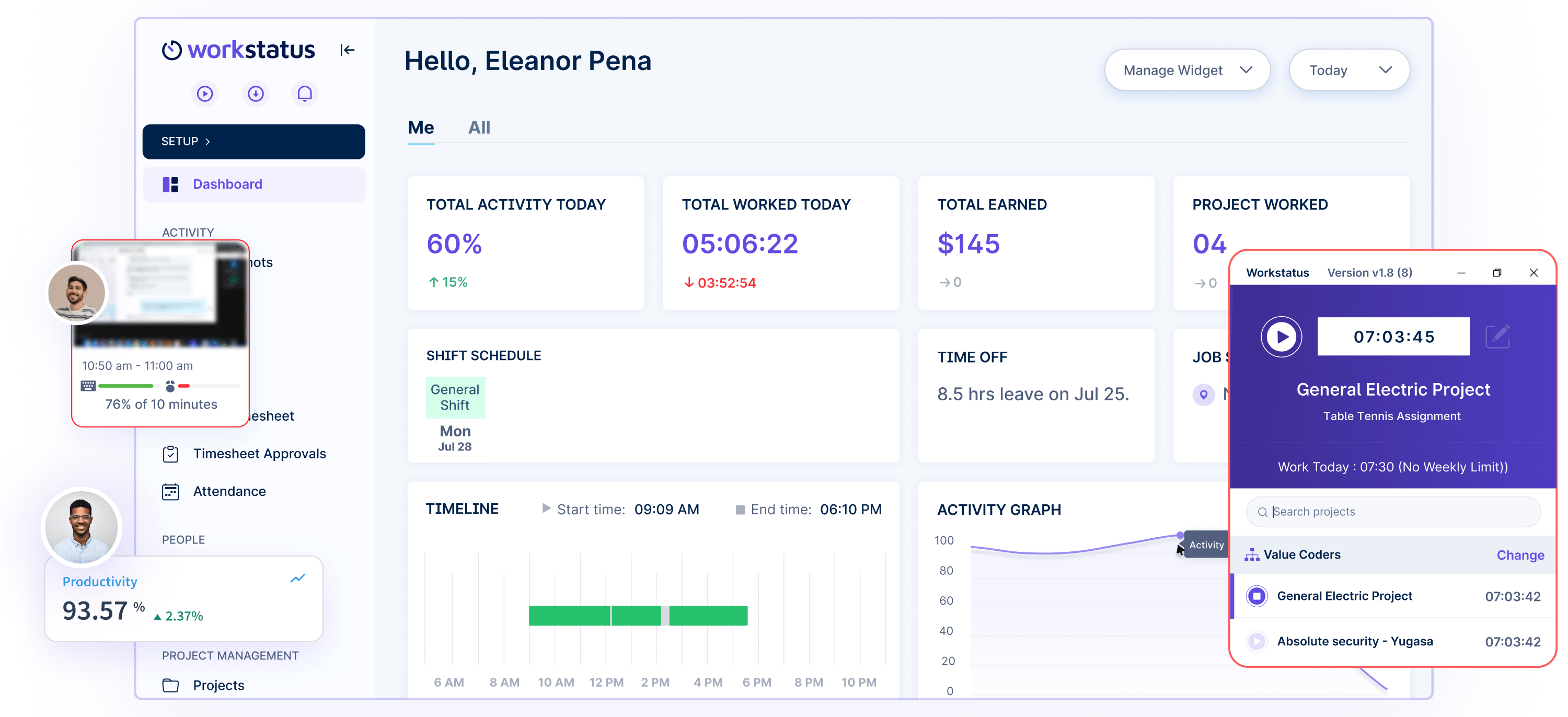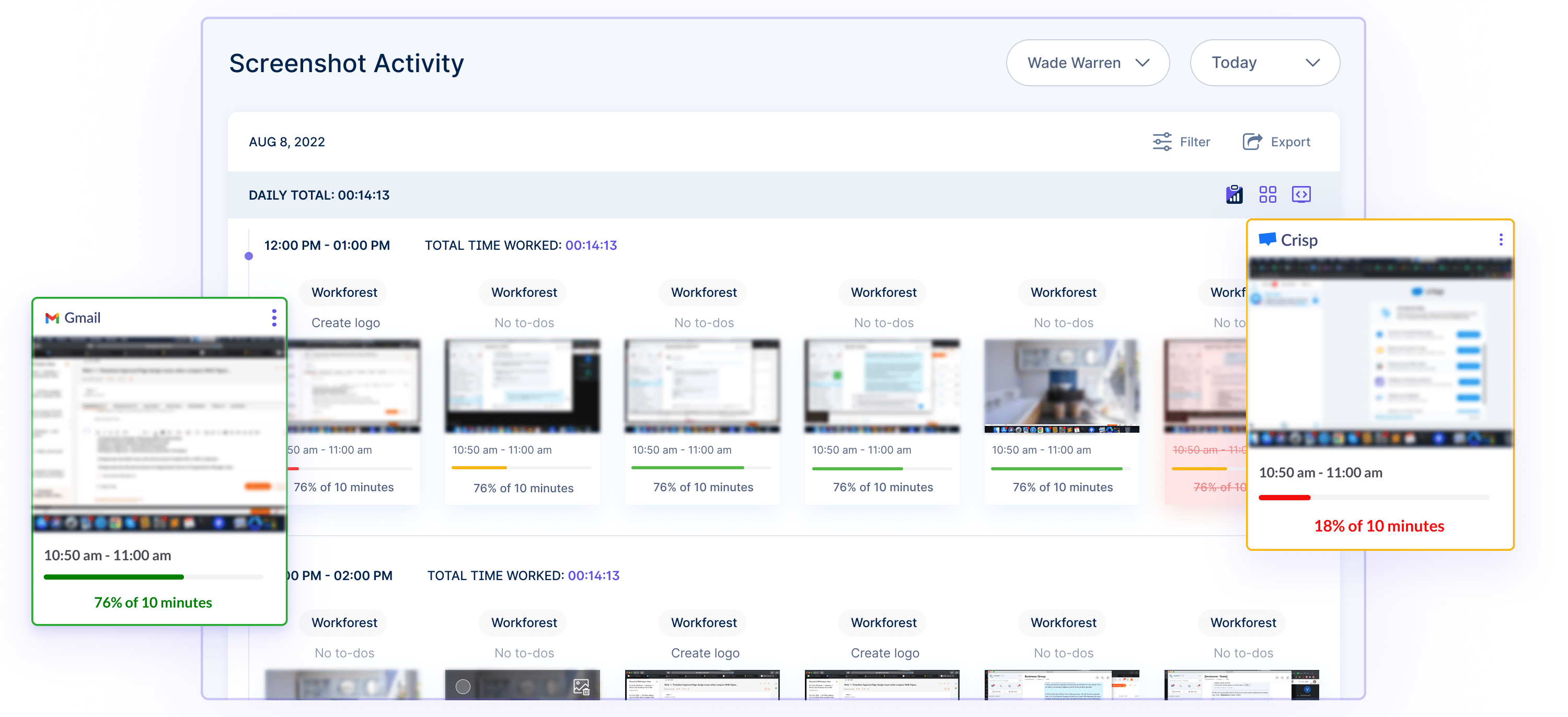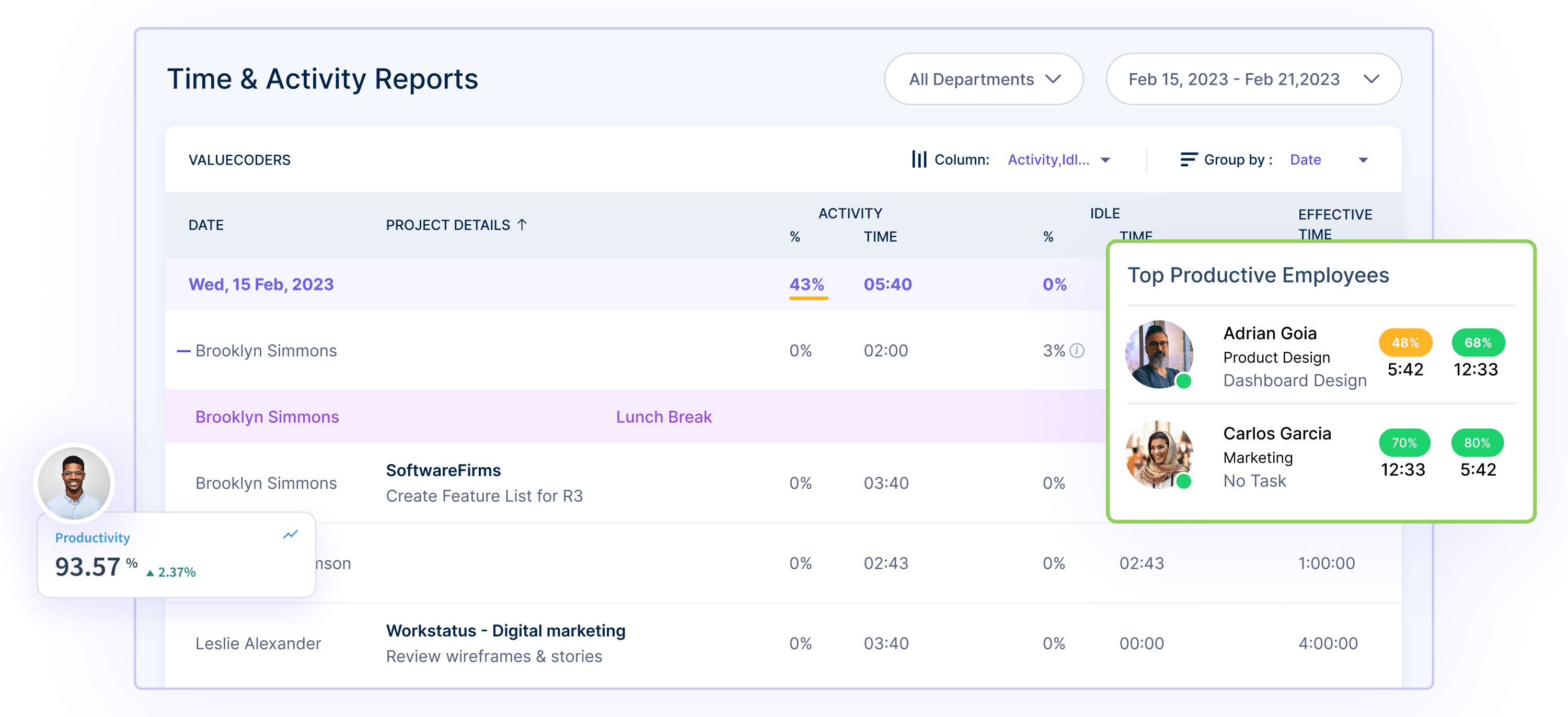Table of Contents
Introduction
Dealing with unproductive employees is like solving a complex puzzle, requiring patience, strategic thinking, and the right pieces to fall into place.
It not only affects individual performance but can also significantly impact the morale and overall productivity of the entire team.
Nearly 79% of companies don’t have a productivity tracking system to distinguish their productive and unproductive employees.
As a result, they often find themselves struggling with issues such as:
- Poor performance evaluation
- Inadequate skills or training
- Ineffective resource allocation
- Imbalance workload distribution
- Absence of accountability
This blog post will discuss the top 11 effective ways to deal with unproductive employees.
By implementing these strategies, businesses can identify the root causes of unproductivity.
Managers can also use these ways to create a more engaged and high-performing workforce.
How To Identify Unproductive Employees?
The first step to enhancing productivity and building a high-performing team is identifying unproductive employees.
Here are several ways to identify which activity is unproductive when at work:
- Missed deadlines: Consistently failing to meet project deadlines or deliver work on time may indicate unproductivity.
- Quality of work: Poor quality outputs, errors, or repeated mistakes can suggest a lack of productivity.
- Lack of engagement: Disengaged employees who show minimal interest in their work are likely unproductive.
- Increased absenteeism: Frequent absences, arriving late, or leaving early may signal a lack of commitment and productivity.
- Negative attitude: Pervasive negativity, complaints, or resistance to change can hinder productivity and impact the team dynamic.
- Lack of teamwork: Unwillingness to collaborate, contribute ideas, or cooperate with colleagues can impede productivity.
Consider these factors in conjunction with open communication, feedback, and understanding individual circumstances to assess employee productivity accurately.
11 Ways To Handle Unproductive Employees
Here are the top ways to manage your unproductive employees with the help of tools like Workstatus:
1. Task Assignment and Prioritization
Task assignments and prioritization are crucial for maximizing productivity in any organization.
By prioritizing tasks, teams can ensure that work is completed efficiently and goals are achieved.
Workstatus can help you allocate tasks based on employee skills and workload.
Here’s how Workstatus can help.
Task Management: Workstatus provides a comprehensive task management feature that enables managers to assign tasks to employees and set deadlines.
Task Prioritization: Prioritize tasks and allocate resources effectively by providing a clear overview of pending tasks and their urgency.
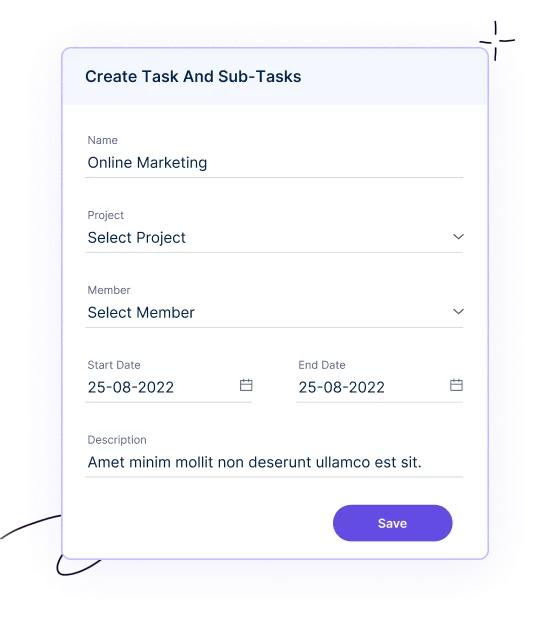
John, a marketing manager, uses Workstatus to assign a social media campaign task to Sarah with a one-week deadline. Clear task assignment and prioritization help Sarah focus on completing the campaign and increases the OTD by 37%.
2. Create a Positive Work Environment
The work environment is a significant contributor to ensuring high employee productivity.
By promoting a positive and supportive work culture, you can create an atmosphere where employees feel valued, motivated, and engaged.
Encouraging open communication, promoting work-life balance, and providing a safe and inclusive environment can increase job satisfaction, morale, and productivity.
3. Track and Analyze Time
Time tracking and analysis can help in managing employee productivity.
Managers can identify bottlenecks, inefficiencies, and unproductive at work patterns by monitoring the time spent on tasks and projects.
Analyzing time data allows for better resource allocation, improved project planning, and prompt addressing of productivity issues.
Workstatus lets you analyze time data for better resource allocation, improved project planning, and the ability to address any productivity issues promptly.
Here’s how Workstatus can help you:
Time Tracking: Workstatus includes an automatic time tracking feature that records employees’ time on different tasks and projects.
Productivity Metrics: Managers can generate productivity metrics based on time spent on tasks, allowing managers to identify and address unproductive patterns.
Idle Time Monitoring: Workstatus can detect periods of inactivity or idle time, providing insights into potential productivity issues and opportunities for improvement.
A project manager, Susan analyzes her team’s time spent on coding, testing, and debugging using Workstatus. By identifying excessive time on debugging, she reallocates resources to testing, improving productivity by 19%.
4. Provide Proper Training
Offer Comprehensive Training and Upskilling Opportunities
Addressing unproductivity can sometimes be traced back to employees lacking essential skills, knowledge, or resources.
By providing employees with comprehensive training and upskilling opportunities, you equip them with the necessary tools and expertise to perform their tasks effectively.
Training programs can enhance various aspects, including:
- Job-specific skills
- Efficiency
- Confidence
This investment in employee development leads to increased productivity and improved overall performance, benefiting both individuals and the organization as a whole.
5. Recognize and Reward Performance
Acknowledging the hard work, achievements, and exceptional performance of employees can create a positive work environment.
It increases job satisfaction and encourages continued productivity and dedication.
Here’s how Workstatus can help you:
Performance Reports: Simple to generate detailed performance reports showcasing individual and team productivity. These reports can help you recognize and reward high-performing employees.
Achievement Tracking: Managers can track employee achievements and milestones, facilitating the identification of exceptional performance and the implementation of appropriate rewards.
Gamification Elements: Workstatus incorporates gamification elements, such as leaderboards and badges, to motivate employees and foster healthy competition.
Mark, a sales team lead, generates performance reports from Workstatus to recognize and reward the employee with the highest sales performance. This motivates the team and inspires others to excel.
6. Set SMART Goals
Setting SMART (Specific, Measurable, Achievable, Relevant, Time-bound) goals provides employees with clear expectations and targets to work towards.
Employees can stay focused and motivated by defining specific objectives, breaking them into actionable steps, and setting realistic deadlines.
SMART goals let managers monitor progress, provide feedback, and address any performance gaps that may contribute to unproductivity.
7. Performance Feedback
Performance feedback is a crucial aspect of employee development and improvement.
By providing constructive feedback, managers can help employees understand their strengths and areas for growth.
Regular performance feedback enables employees to make necessary adjustments to enhance their productivity and overall performance.
You can automate a performance feedback system with Workstatus.
Here’s how Workstatus can help you:
Employee Screenshots: Workstatus captures random screenshots of employees’ screens, providing managers with visual evidence to offer constructive feedback and identify areas for improvement.
Productivity Trends: You can track productivity trends over time, enabling managers to provide data-driven feedback on performance and suggest strategies for improvement.
Employee Performance Goals: Set performance goals and track their progress. This empowers employees to take ownership of their productivity and gives managers insights into their aspirations and areas of focus for growth.
8. Performance Improvement Plan (PIP)
When facing challenges with employee productivity, implementing a personalized Performance Improvement Plan (PIP) is a constructive approach to address performance issues.
A well-designed PIP involves the following steps tailored to individual challenges:
- Open Communication
- Identifying Specific Goals
- Support and Resources
- Ongoing Feedback
- Monitoring and Adjustments
- Recognition and Encouragement
The PIP empowers employees to develop professionally while upholding productivity and organizational standards.
9. Manage Time Wasters
Time wasters can significantly impact employee productivity and hinder progress.
Managing time wasters involves identifying and addressing activities or behaviors that consume time but provide little value to work.
By minimizing or eliminating time-wasting activities, employees can focus on essential tasks, improve efficiency, and make better use of their work hours.
Workstatus can help you remove non-work related activities from your workflow.
Here’s how Workstatus can help:
Website and App Monitoring: Monitor employees’ website and application usage, helping managers identify time-wasting activities and take appropriate measures.
Distraction Alerts: Workstatus can show you when employees spend excessive time on non-work-related websites or applications. Enabling managers to intervene and refocus their attention.
Pomodoro Time Tracker: Workstatus follows Pomodoro Technique, a time management method allowing employees to set timers and track focused work intervals.
David, an operations manager, monitors website and app usage with Workstatus. He identifies excessive social media use and intervenes using real-time distraction alerts, reducing time-wasting activities by 41%.
10. Employee Wellness Programs
Employee wellness programs are designed to promote the physical, mental, and emotional well-being of employees.
These programs can help address unproductivity by addressing factors contributing to it, such as:
- Stress
- Burnout
- Health issues
Companies can support their employees’ well-being and improve their productivity by offering resources and initiatives like fitness programs, stress management workshops, and counseling services.
11. Offer Incentives and Rewards
Incentives and rewards can be effective motivators to encourage productivity and performance improvement.
Organizations can create a positive reinforcement system that recognizes and celebrates the achievements by offering tangible rewards, such as:
- Bonuses
- Recognition
- Additional time off and more
These incentives can inspire employees to work more efficiently, meet goals, and contribute to a more productive work environment.
Closing Thoughts
Dealing with unproductive employees requires a combination of strategies and parameters.
With the right tools and strategies, unproductive employees can be motivated, guided, and supported toward improved performance.
Ultimately, it helps both the employee and the organization to succeed in the long term.
Take charge of your workforce.
Empower your team for success.




